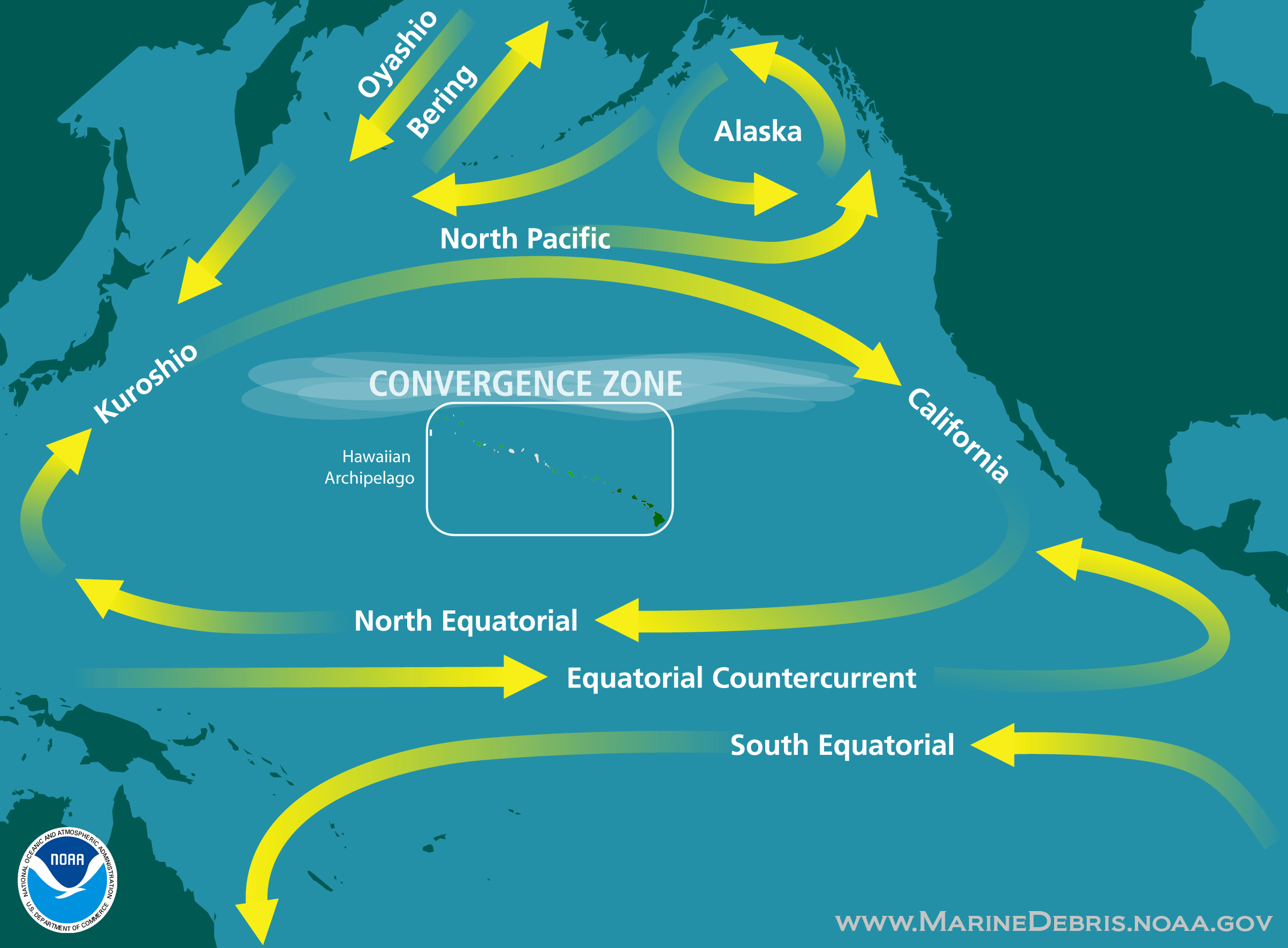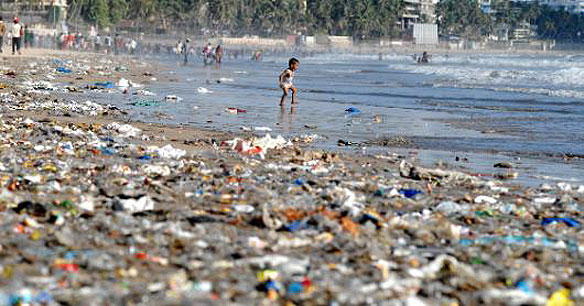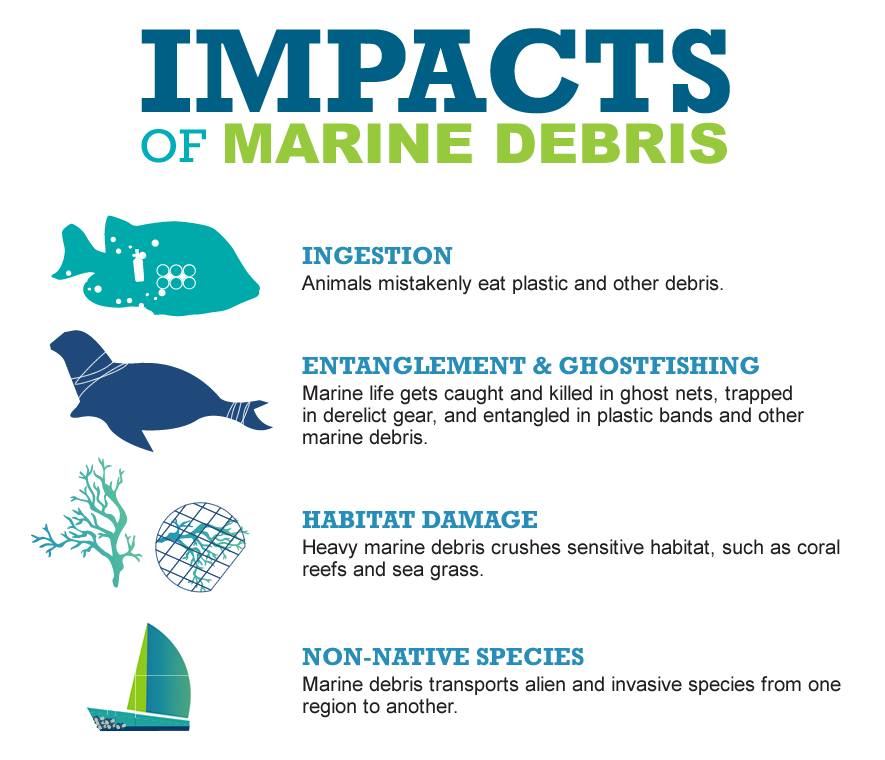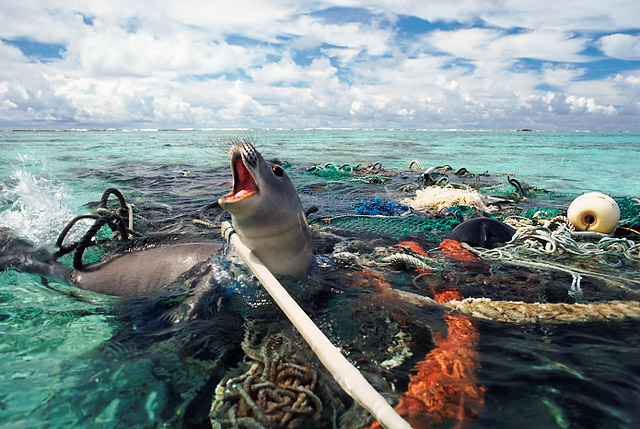The “plastic plague” is a modern “disease” of today’s society. The global population is producing enormous amounts of garbage, and a large portion of it ends up in the ocean, making a huge impact on our environment, marine wildlife, navigation safety, the economy, and human health. The ocean currents carry this marine trash and trap it within the certain ocean location. The largest documented garbage patch is so-called The Great Pacific Garbage Patch or Pacific trash vortex which you’ve probably heard of. But, what exactly is The Great Pacific Garbage Patch? And, what it isn’t?
Discovery of the Great Pacific Garbage Patch
The patch consists of two distinct masses of garbage floating in the Pacific Ocean: the Eastern Garbage Patch, located near Japan, and the Western Garbage Patch, located between the U.S. states of Hawaii and California.
By careful monitoring of the garbage tendency, especially in the water and oceans, the National Oceanic and Atmospheric Association (NOAA) actually have predicted the existence of this huge garbage patch in 1988. But it was officially documented 11 years later when Captain Charles Moore passed through the garbage area after competing in a sailing race. He decided to take a shortcut through the gyre on the way back home to Long Beach, California, rarely crossed by seafarers. What he had found, was a marine debris floating all over the area.
In an article for Natural History magazine about his discovery, Moore wrote: “It seemed unbelievable, but I never found a clear spot. In the week it took to cross the subtropical high, no matter what time of day I looked, plastic debris was floating everywhere: bottles, bottle caps, wrappers, fragments. Months later, after I discussed what I had seen with the oceanographer Curtis Ebbesmeyer, perhaps the world’s leading expert on flotsam, he began referring to the area as the ‘eastern garbage patch.'”
The Pacific Patch is not a visible “island of trash”
Contrary to popular belief, the Great Pacific Garbage Patch is not an actual island of trash, formed by large, plastic pieces and items, such as plastic bottles and other litter. The truth is that the garbage patch is actually comprised of tiny pieces of floating plastic called nurdles, with the low density. These raw plastic pellets sometimes are not visible with the naked eye.
In fact, the ocean garbage patch is not visible with the satellites or aerial photographs, as it’s mistakenly believed. The larger plastic items are found sometimes, but the garbage patch is mostly made of non-biodegradable elements called “microplastic” that are less than 5 millimeters long. It is possible to sail through the garbage patch area and see very little or no debris on the water’s surface, just as Captain Moore did.

The marine debris is carried by water currents, called gyres. That’s why the patch doesn’t have the permanent location and borders. It is constantly moving, making it impossible to estimate its size. Source: NOAA Marine Debris Program
These large areas of marine trash are constantly driven by the rotating ocean currents rotating called gyres – something like big whirlpools that suck things in. The borders of garbage patches are impermanent. That’s why it is hard to estimate the amount of garbage and its specific location. The garbage is dispersed on the water surface and about 70% of it actually sinks to the bottom of the ocean.
“Regardless of the exact size, mass, and location of the ‘garbage patch’, manmade debris does not belong in our oceans and waterways and must be addressed”, it is stated in NOAA’s Marine Debris Program.
The garbage patches exist all way through the world ocean. A well-known garbage patch in the Atlantic Ocean is situated in the Sargasso Sea, but the Great Pacific Patch is the most famous.
Garbage patch’s impact on human and wildlife
The plastic particles floating in our oceans is highly toxic. Plastic contains chemicals such as BPA, or bisphenol A, which can be released into water, causing severe environmental and health problems. PCB, or polychlorinated biphenyl, which accumulates in plastic, can cause high toxic levels in the water. When the marine food is intoxicated, the human diet based on marine food becomes the potential risk.
Not only this marine debris is harmful to humans, it can also have a significant and harmful impact on marine biodiversity. It strongly impacts on marine wildlife who see it as food or objects of interest. Turtles, whales, dolphins and seabirds are threatened by this toxic ocean garbage.
The plastic nurdles can concentrate toxins which are passed on to sea animals when they eat them. This could lead to death by poisoning, and cause many genetic problems. The floating plastic debris can also prevent sunlight from reaching photosynthetic plankton or algae, microscopic organisms that serve a crucial function as the base of the entire marine food web.
The ultimate solution is PREVENTION
It is quite difficult to clean the ocean of the marine debris. As it’s previously said, the garbage is formed of tiny particles spreading widely and vertically across the ocean. That makes the trash impossible to remove from the water, and not to harm the wildlife in the ocean.
Attempts have been made to clean the trash, but there is simply too much material, especially microplastic, in an extremely large area.
But, NOAA thinks it is preventable. NOAA scientists suggest 3 highest priorities in preventing the further growth of garbage patches: reduce, reuse, and recycle.
In that way, we can keep the trash out of the ocean in the first place. But, sadly, the present garbage patches, such as The Great Pacific Garbage Patch will last well into the future.







